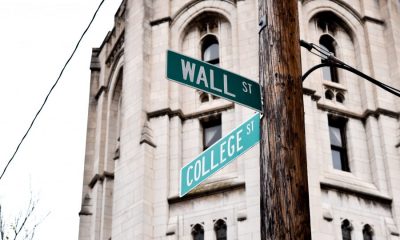Ripple may be gambling to be part of Federal Reserve’s FedNow service which is set to give U.S payment system a face-lift

Federal Reserve’s Lael Brainard detailed an upgrade to America’s existing payment system on August 5. The new and improved payment system, dubbed FedNow Service, will be available by 2023/2024. This has riled up Ripple and XRP enthusiasts, more so after Dilip Rao’s tweet about FedNow.
The FedNow Service
The current version of payments in the U.S. includes ACH, Debit & Credit Cards etc., all of which are in one way or another linked to legacy payment methods and have a lot of shortcomings. Payment systems in the U.S. were more than due for a necessary upgrade, which is the reason for the Fed’s decision to introduce “Faster Payment” and subsequently, FedNow.
Why FedNow?
The FATF, introduced in 2017, asked industry incumbents and financial institutions around the country to suggest ideas to improve the payment system, which resulted in over 350 comments received from 800 organizations. Almost 90% of them urged the Federal Reserve to run a real-time payment service by providing instant inter-bank settlement, alongside a single private-sector system.
In addition to the above, the increasing threat to the U.S. dollar from private sectors like Facebook and its proposed global currency, Libra, and the accelerating growth in the crypto industry has led the Fed to develop a payment service – FedNow.
So What is FedNow?
FedNow is a 24x7x365 inter-bank, RTGS settlement service with clearing functionality with the sole purpose of faster payments. FedNow would also provide infrastructure to promote ubiquitous, safe, and efficient faster payments in the United States.
Lael Brainard also clarified that FedNow will be operating this payment service, alongside private sector providers. In addition, FedNow service will be available to around 10,000 banks across the country that are already connected to the Federal Reserve.
The main takeaway from the announcement is that banks can now clear and settle payments between themselves, which previously would have to go through the central bank.
The lingering question on everybody’s mind after watching the FedNow presentation is the identity of the private sector operator who will work with the Fed.
Ripple’s Global Head, Infrastructure Innovation, Dilip Rao, tweeted,
Great move! #FedNow will drive the transformation to real-time payments infrastructure around the world: both domestic and cross-border! @Ripple mission #IoV https://t.co/hpRQ1YYGKI
— Dilip Rao (@diliprao) August 5, 2019
This has caused a lot of ruckus in the Ripple and XRP community, with many speculating that Ripple could be that “private sector operator” that the Fed was talking about.
Addressing the Speculation
Can Ripple be the private sector company working with the Fed?
Ripple has openly shared that it was and is working the Federal Reserve to improve payment systems in the U.S. It is no secret. However, Ripple announced on 21 July 2017, that Ripple’s proposal for Faster Payments stood out for speed and transparency.
Further, McKinsey’s assessment of Ripple stated,
“Ripple enables FIs the ability to operate cross-border payments faster than the 2-4 days common today… The solution bolsters the certainty of the cross-border payment experience by providing end-to-end transaction visibility to banks, as well as settlement confirmation… Ripple enables more transparency in the total cost of a payment to the payee prior to authorization if participating banks are willing to provide this transparency.”
Apart from the above, Ripple also received praise for being “flexible” enough to be integrated directly into an FI’s or a third-party provider’s platform to which FIs are already connected.
Although FedNow is a good direction, banks would need capital to clear and settle payments, the details of which were not provided in the presentation as of yet. This is where Dilip Rao’s tweet on why Faster Payments are good for XRP comes into the picture.
Why #FasterPayments are good for #XRP
1/5: To fund settlements (final delivery to beneficiary), the sending bank (typically) needs to have a pre-funded Nostro account at the receiving bank (or a correspondent in the middle).
— diliprao (@diliprao) October 11, 2018
However, one could argue that this is outlandish as the government would not opt to use cryptocurrency for providing liquidity for obvious reasons. A well-known XRP enthusiast in the community addressed this issue in a tweet,
He’s a great salesman, but xrp is dead in the water without liquidity. The feds are never going to liquify xrp when they can just create a stable fedcoin at zero cost
— galgitron (no price predictions) (@galgitron) August 5, 2019
Even if one were to neglect the question of liquidity for time being, Ripple still has Ryan Zagone on the board of FATF, and Ripple could still be concerted with the Feds, considering blockchain technology and the solutions it offers.
What if it is not Ripple?
The FPTF had 16 proposals which were evaluated and classified by a Qualified Independent Assessment Team [QIAT] into ‘very effective,’ ‘effective,’ ‘somewhat effective,’ or ‘not effective’ brackets, based on 30 criteria. Ripple received an overall evaluation of “somewhat effective,” while there were others that received higher ratings than Ripple.
Moreover, comparing the assessment of the QIATF between Ripple, Dwolla Inc. & the Clearing House, clearly shows that Clearing House garnered favorable ratings, following which is Dwolla Inc., followed by Ripple.
Hence, it cannot be surely concluded that Ripple will be working with the Fed.
Ripple’s Asheesh Birla put it best when he tweeted,
A lot of the pieces we write about are thought leadership pieces about the industry in general and not specifically about Ripple. If there is an Ripple angle, I’ll be explicit about it.
— Asheesh Birla (@ashgoblue) August 6, 2019
Could it be Ripple? If so, would all of America’s banks linked to the FedNow service be powered by Ripple’s tech? The community is in a limbo, wondering if Ripple is actually involved in the FedNow service or not.
AMBCrypto has reached out to Ripple’s execs for a comment. The article will be updated accordingly.

